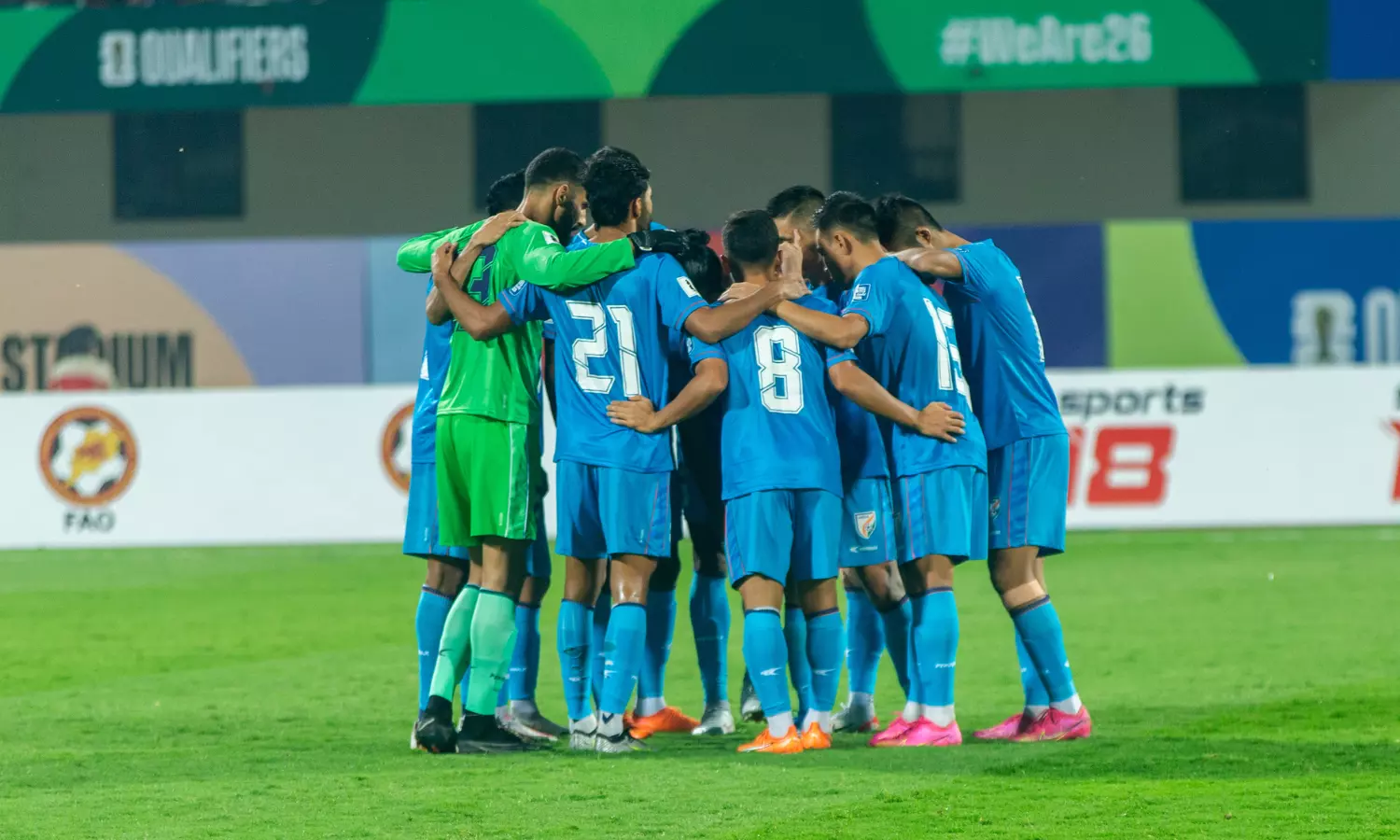Football
FIFA World Cup Qualifiers: India v Qatar- Tactical Analysis
Here is how the Indian men’s football team battled against Qatar on the tactical front in the FIFA World Cup qualifiers.

It's tough for any team in the world to take on the top teams of Asia and for India too, it was the same prescription. Qatar came to Kalinga to solidify their position as group leaders and they did. Albeit having made to work a tad more than expected.
Indian hopes were high following the historic Kuwait win, but it was a cautious hope. The opposition at hand were the reigning Asian champions.
The key was for India to identify the fine line between respect and fear; and that is one aspect Igor Stimac has gotten spot on in his tenure. On the pitch, India has never looked more confident.
However, the Blue Tigers’ line-up couldn't have been more dramatic. Hours prior to kick-off, reports suggesting massive changes in the XI surfaced, and it was proved right.
India lined up having 5 changes in the starting XI from the one that beat Kuwait — Amrinder, Subhashish Bose, Anirudh Thapa, Udanta and Chhangte all coming into the line-up.
Among them, the change of keepers was taken with huge surprise and some disbelief. To bench Gurpreet for India was uncommon, let alone against Qatar, in a World Cup Qualifier.
It was a huge call and Amrinder had to show up for it.
Carlos Queiroz had a couple of changes in his side too. 2 changes to be precise — naturalized centerback Lucas Mendes (Qatar debut) and forward Tameem Al Abdullah coming in as a change from the eleven that battered Afghanistan.
India kicked off the first half, but went straight into chaos. Just 90 seconds after kick-off Qatar were in India’s box and missed an almost certain goal. That Qatari move was a consequence of a poor attempt to play out of pressure by Amrinder leading to turnover of possession. Immediately Qatar showed what they could do.
This was a pattern that kept happening as Qatar pressed high out-of-possession. Queiroz’s side pressed the Indian center-backs with an attacker, forcing play back to the keeper and then immediately pressing the keeper himself, forcing Amrinder to kick out wide.
This ball out wide was not always accurate and Qatar had set themselves to win the first-ball in such situations. With a Qatari midfielder breathing down the necks of both Apuia or Suresh, who dropped to help, Amrinder’s job was made tougher than ever. Qatar made 11 recoveries (8 in the wide zones) in India’s defensive third in the entire game.
India’s midfield was often on the edge of being over-run due to the fluidity with which H. Al Haydos and M. Meshaal conducted the play. The understanding between them and the Qatari full-backs meant there was constant rotation of positions and as a consequence India could not really man-mark them out as they did against Kuwait.
Qatar played out of pressure with relative ease, forcing India to retreat and resort to last ditch defending to prevent Al-Annabi’s goal scoring chances.
Meanwhile, on the other end of the spectrum; Al-Ennabi’s (The Maroons) build-up evaded India’s press more often than not. India could not commit to the press in high volume due to the threat in behind, hence on the odd occasion that Chhetri did press, the trio consisting of the 2 centerbacks and the goalkeeper found the way out rather easily. At no point did Qatar have to drop anyone to progress play.
India did remain competent and fought well; but the Maroons exercised a clear dominance on attacking aerials following set-pieces. For context, out of the 20 shots Qatar had in the game, 6 were headers. 5 of them came in the first half alone, with almost all coming following a corner routine.
India somehow held on without conceding from any of those 5 as Qatar failed to hit the target. But ironically, the third Qatari goal was indeed a header. Luck can only save you so many times.
Although, not everything was despondent. Even if India did struggle to build play, they were not completely succumbed by the pressure. The first Indian shot was a result of a sequential build-up that started from the keeper and ended with an Apuia shot that was blazed over. It took 35 minutes for India to finally mount a proper attack.
The timing of the Qatari goals meant Qatar had the luxury to control the game while gradually playing at a lower intensity. The gamestate (1-0 at 4’, 2-0 at 47’, 3-0 at 86’) favored them throughout. Stimac’s substitutions had an impact but not enough to penetrate the away team's goal.
And that was the game. Qatar were better, but India did show promise occasionally. As Pulasta Dhar said in commentary - “Fearless is one thing, but they have to be merciless in front of goal”.
India’s attacking raids were far and few but carried signs of courage. It was no longer a hoofed ball up-field, but a built and planned attack which ultimately fell short on the day as none of India’s shots reached the target.
With that the Indian team ended the 2023 calendar year with a total of ten wins, two losses, and four draws in the 16 matches played.
The Indian team will set foot in Doha, Qatar early next year for the 2024 Asian Cup.
